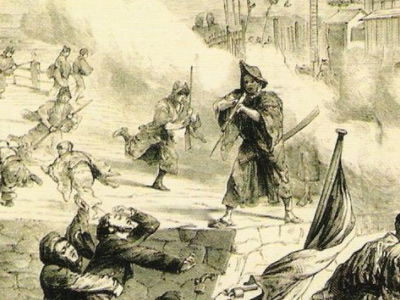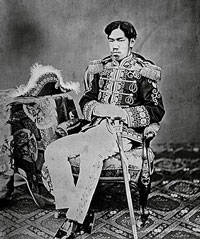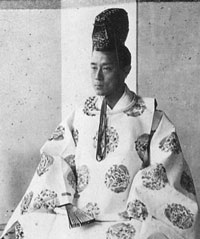Boshin War (1868-1869)
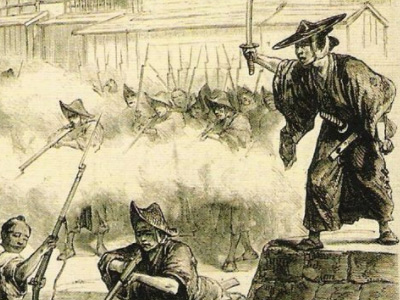
Resistance of the Northern Coalition
After Yoshinobu's surrender, most of Japan accepted the emperor's rule, but a core of domains in the North, supporting the Aizu clan, continued the resistance. In May several northern daimyōs formed an Alliance to fight Imperial troops, the coalition of northern domains composed primarily of forces from the domains of Sendai, Yonezawa, Aizu, Shōnai and Nagaoka, with a total of 50,000 troops. An Imperial Prince, Kitashirakawa Yoshihisa had fled north with partisans of the Tokugawa shogunate and was made the nominal head of the Northern Coalition, with the intention of naming him "Emperor Tobu".
In May 1868, the daimyō of Nagaoka inflicted high losses on the Imperial troops in the Battle of Hokuetsu, but his castle ultimately fell on May 19. Imperial troops continued to progress north, defeating the Shinsengumi at the Battle of Bonari Pass, which opened the way for their attack on the castle of Aizuwakamatsu in the Battle of Aizu in October 1868, thus making the position in Sendai untenable.

These books are available for download with Apple Books on your Mac or iOS device
Enomoto's fleet joined Sendai harbour on August 26. Although the Northern Coalition was numerous, it was poorly equipped, and relied on traditional fighting methods. Modern armament was scarce, and last-minute efforts were made to build cannons made of wood and reinforced with roping, firing stone projectiles. Such cannons, installed on defensive structures, could only fire four or five projectiles before bursting. On the other hand, the daimyō of Nagaoka managed to procure two of the three Gatling guns in Japan and 2,000 modern French rifles from the German weapons dealer Henry Schnell.
The coalition crumbled, and on October 12, 1868 the fleet left Sendai for Hokkaidō, after having acquired two more ships (Oe and Hōō, previously borrowed by Sendai from the Shogunate), and about 1,000 more troops: remaining Shogunate troops under Ōtori Keisuke, Shinsengumi troops under Hijikata Toshizō, the guerilla corps (yugekitai) under Hitomi Katsutarō, as well as several more French Second French Empire was the 18-year Imperial Bonapartist regime of Napoleon III from 14 January 1852 to 27 October 1870. The Second Empire is given high credit for the rebuilding of Paris with broad boulevards, striking public buildings, and elegant residential districts for upscale Parisians. In international policy, Napoleon III tried to emulate his uncle Napoleon I, engaging in numerous imperial ventures around the world as well as several wars in Europe. advisers (Fortant, Garde, Marlin, Bouffier).
Second French Empire was the 18-year Imperial Bonapartist regime of Napoleon III from 14 January 1852 to 27 October 1870. The Second Empire is given high credit for the rebuilding of Paris with broad boulevards, striking public buildings, and elegant residential districts for upscale Parisians. In international policy, Napoleon III tried to emulate his uncle Napoleon I, engaging in numerous imperial ventures around the world as well as several wars in Europe. advisers (Fortant, Garde, Marlin, Bouffier).
On October 26, Edo was renamed Tokyo, and the Meiji period officially started. Aizu was besieged starting that month, leading to the mass suicide of the Byakkotai (White Tiger Corps) young warriors. After a protracted month-long battle, Aizu finally admitted defeat on November 6.
HISTORY
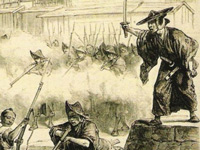
RESOURCES
This article uses material from the Wikipedia article "Boshin War (1868-1869)", which is released under the Creative Commons Attribution-Share-Alike License 3.0.
© Stories Preschool. All Rights Reserved.
